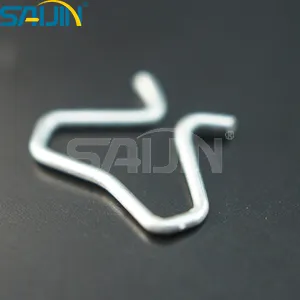The manufacturing process of electrical contact points is a multi-step, high-precision process designed to ensure that the contact points have good conductivity, wear resistance, corrosion resistance and reliability. The following is a general overview of the manufacturing process of electrical contact points:
I. Material Selection and Preparation
1. Material Selection: Select suitable conductive materials such as silver, copper, gold, palladium and their alloys according to product requirements and application environment. These materials must have good conductivity, corrosion resistance and mechanical strength.
2. Material Pretreatment: Pre-treat the selected materials, including cleaning, deoxidation, surface treatment, etc., to ensure the purity and adhesion of the material surface.
II. Design and Manufacturing of Molds
1. Design: Design the shape, size and precision requirements of the contact points according to product design and specification requirements.
2. Manufacturing Molds: Manufacture high-precision molds according to design drawings. The precision and stability of the mold directly affect the quality and performance of the contact points.
III. Forming and Processing
1. Stamping: For metal contact points, stamping process is often used for forming. Put the metal strip into the stamping machine, and form the preliminary shape of the contact point through the stamping action of the die.
2. Precision machining: The stamped contact points are precision machined, such as cutting, grinding, polishing, etc., to improve the accuracy and surface quality of the contact points.
IV. Surface treatment
1. Plating treatment: In order to improve the conductivity, corrosion resistance and wear resistance of the contact points, the contact points are often plated. Such as silver plating, gold plating, nickel plating, etc. The plating needs to be uniform, dense, and meet relevant standards.
2. Heat treatment: For some special materials or process requirements, heat treatment may be required to improve the mechanical and chemical properties of the material.
V. Assembly and testing
1. Assembly: Assemble the processed contact points with the substrate or other components. During the assembly process, it is necessary to ensure that the position of the contact points is accurate and fixed reliably.
2. Testing: Test the assembled contact points, including contact resistance test, corrosion resistance test, mechanical strength test, etc. The test needs to be carried out in accordance with relevant standards and requirements to ensure that the quality and performance of the contact points meet the design requirements.
VI. Quality Control and Inspection
1. Process Control: Implement strict quality control measures during the manufacturing process to ensure that each link meets the process requirements and quality standards.
2. Finished Product Inspection: Conduct a comprehensive inspection of the finished contact points, including appearance inspection, dimensional measurement, performance testing, etc. Defective products are repaired or scrapped.
In summary, the manufacturing process of Electrical Contact Points is a complex and delicate process that requires comprehensive consideration of material selection, mold design, molding processing, surface treatment, assembly testing, and quality control. By optimizing the manufacturing process and strict quality control measures, high-quality and high-performance electrical contact point products can be produced.











